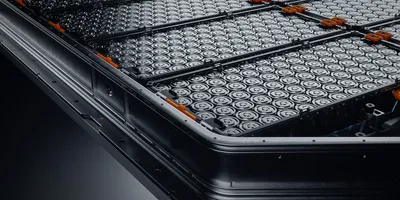New technology that enables robots to work stably in turbulent seas could make it cheaper, faster and safer to maintain offshore wind farms and tidal turbines, researchers say.
Until now, the unpredictable nature of waves -- which make it difficult for machines to remain stable and perform precise movements -- has limited the use of robots in the upkeep of offshore platforms.
Stationing autonomous robots offshore to perform routine maintenance would reduce the cost of generating renewable energy, which is typically much higher than using fossil fuels, the team says.
It could also simplify operations -- which currently can involve ships and helicopters or hoisting equipment out of the water -- and remove the need for people to work in dangerous settings.
Engineers at the University of Edinburgh developed new computational and experimental tools to enable autonomous robots to maintain a steady position amid irregular, buffeting waves.
The researchers trialled their system at the University's FloWave testing tank, using wave data captured by a buoy in the North Sea to mimic the types of conditions robots might work in.
Wave-detecting devices are tethered to the seafloor and measure the direction and height of incoming waves, relaying the information in real-time to a robot working nearby. This enables the unmanned machine to pre-empt complex future disturbances in the water, precisely counteracting these to maintain a stable position.
Findings indicate the system is compatible with robots operating near the surface and those working at greater depths, where disturbances can still be felt strongly.
The new technology improves on conventional control systems, the team says, which operate in a corrective fashion. These are prone to responding slowly to the fast-changing disturbances of the ocean, making them much less reliable in such hazardous environments.
Dr Kyle Walker, who developed the work as part of his PhD at the University of Edinburgh, said: "A major limitation at present is robots' ability to perceive and counteract environmental disturbances effectively, which fundamentally restricts the current use of small subsea vehicles. By forming a prediction of future wave disturbances and integrating this within the control system, we're able to expand this range with little to no change to the robot hardware.
"In terms of translating this technology into the field, this is a huge benefit and makes our system applicable to most vehicles currently available on the market."
Future research aims to improve autonomous machines' ability to perform precise tasks -- such as using robotic arms to detect rust or fix electric equipment -- while holding a steady position in water.
The study, published in the International Journal of Robotics Research, received funding from the Engineering and Physical Sciences Research Council.
The work was a continuation of the now-finished ORCA Hub project, an initiative to support the green energy transition led by Heriot-Watt University and the University of Edinburgh.
Dr Francesco Giorgio-Serchi, of the University of Edinburgh's School of Engineering, who led the study, said: "Increasing the use of autonomous robots to help maintain offshore renewable installations could have a transformative effect on cutting the cost of producing clean energy. Advancing this technology further could help bring about a step change in the adoption of unmanned robots at sea and drastically increase the degree of automation in the offshore sector."
Lab Management Certificate
The Lab Management certificate is more than training—it’s a professional advantage.
Gain critical skills and IACET-approved CEUs that make a measurable difference.
-Note: This news release was originally published by the University of Edinburgh. As it has been republished, it may deviate from our style guide.











